Gynaecological probiotic: vaginal or oral [+ranking].
What gynaecological probiotics can help with and which strains of bacteria to look for in the formulations.


Learn more about our editorial process
.

Learn more about our editorial process
.

Learn more about our editorial process
.

Learn more about our editorial process
.![Gynaecological probiotic: vaginal or oral [+ranking].](https://cdn-resources.natu.care/uploads/1/female_holding_white_container_pills_1_b69c77d6a0.jpg)
Why you can trust us
Articles on Natu.Care are written based on scientific research, data from government websites and other reliable sources. The texts are written in cooperation with doctors, nutritionists and other health and beauty experts. Articles are reviewed before publication and during significant updates.
.Learn more about our editorial process
.Information about advertisements
Content on Natu.Care may contain links to products from the sale of which we may receive a commission. When creating content, we adhere to high editorial standards and take care to be objective about the products discussed. The presence of affiliate links is not dictated by our partners, and we select the products we review ourselves completely independently.
.Learn more about our terms and Conditions
.Itching, burning and uncomfortable discharge. This is nothing to be ashamed of. Intimate infections affect more than ¾ of women. But there is something that can help you. Gynaecological probiotics.
Living cultures of bacteria can also be delivered to the genitourinary tract. And there, these little protectors can help crack down on any uninvited guests - fungus, streptococcus and pathogenic bacteria.
They can also help you to get rid of any uninvited guests.
Although the results of the study are not conclusive, they are encouraging. That is why, together with Ilona Krzak, M.Sc. in Pharmacy, we will tell you which preparations will be best for your ailments.
The results of the tests are inconclusive.
From this article you will learn:
- What is the difference between a probiotic and a gynaecological probiotic.
- What is the difference between a probiotic and a gynaecological probiotic?
- What bacterial strains a good gynaecological probiotic should contain. .
- Which preparations are best. .
- What to choose: vaginal or oral probiotic. .
- What to use gynaecological probiotics for. .
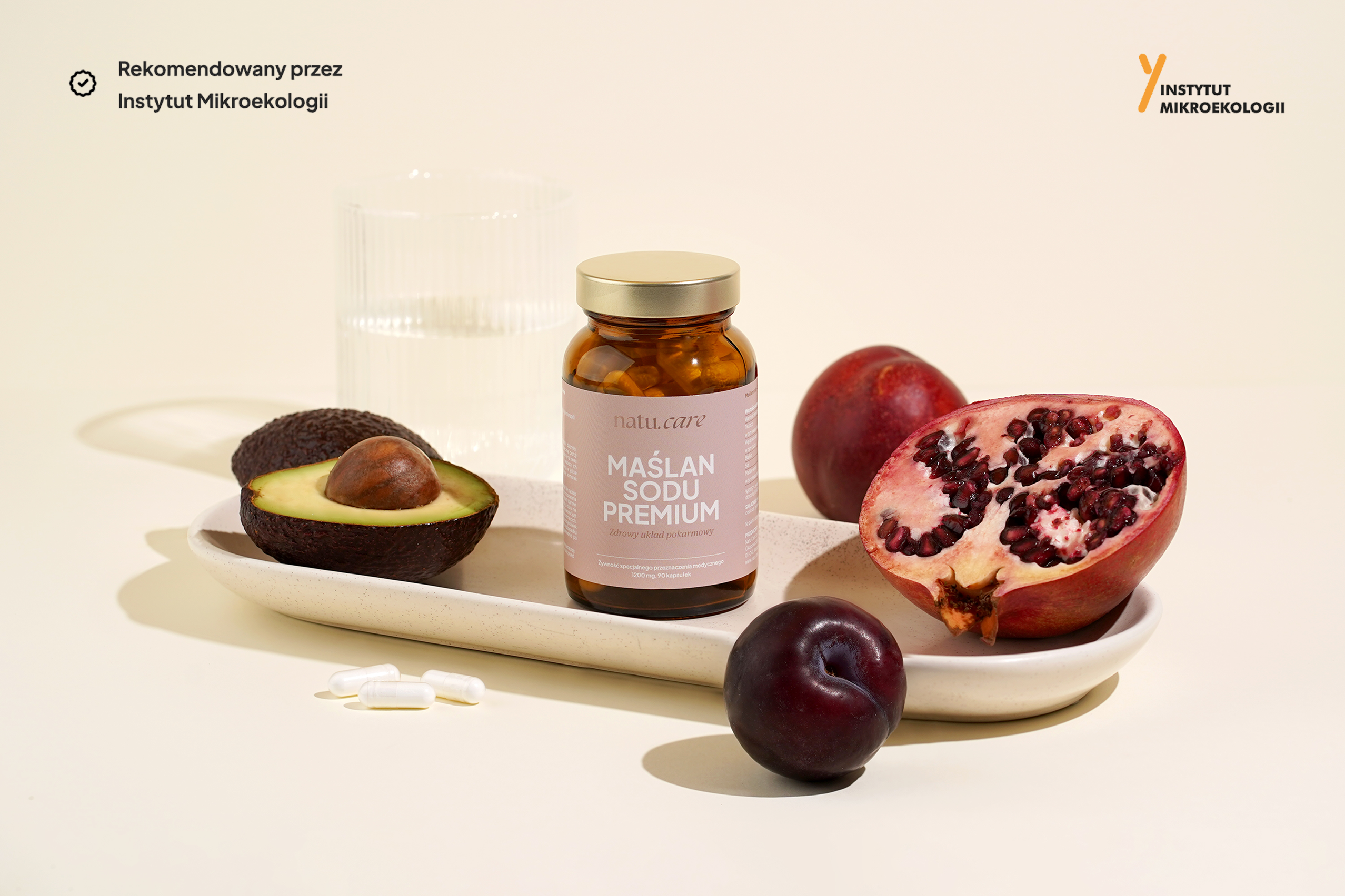
Odkryj korzyści, jakie niesie ze sobą Maślan Sodu Premium od Natu.Care! -15% z kodem BLOG15
Natu.Care Maślan Sodu Premium
Poznaj Maślan Sodu Premium – najwyższej jakości suplement wspierający zdrowie jelit. Maślan sodu pomaga w regeneracji nabłonka jelitowego, poprawia trawienie i wspiera naturalną równowagę mikroflory.
Sprawdź cenę
W końcu się lepiej czuję! Pożegnałam się ze wzdęciami i zaparciami a do tego poprawił się stan mojej cery bo zdrowe jelita to też zdrowa i piękna skóra. Polecam!@Klaudia F.
See also:
.
- What is a probiotic
- What is a prebiotic
- What is a synbiotic
- What is a psychobiotic
- What is sodium butyrate
- What is butyric acid
- The best probiotic
- Probiotics during pregnancy and lactation
Gynaecological probiotics vs regular probiotics - what's the difference?
.
Probiotics are usually spoken of in the context of replenishing the gut flora. But as it happens, beneficial bacteria live in other parts of your body too. You will find them on your skin and in your vagina, for example.
Interesting facts
We acquire the first probiotic bacteria already during fetal life, and another portion of them during birth from the mother - travelling into the world through the birth tract or (in the case of delivery by caesarean section) through contact with the parent's skin.
It is very important to prevent and treat vaginal infections during pregnancy. Infections of the genital tract, as well as other tissues of the body (even the periodontium!) can promote preterm birth. This can be very dangerous for the baby..
 .
.
Ilona Krzak Master of Pharmacy
Probiotics are such invisible to the eye watchdogs that take care of the balance in your body. They maintain the right pH in the vagina - between 3.6 and 4.5. When this is too high, it promotes the development of fungal and bacterial infections.
And, as befits true protectors, they protect you from pathogens, i.e. harmful microorganisms that can lead to various diseases. Probiotic bacteria, such as Lactobacillus, act as a barrier that does not allow harmful microbes to grow. They take away uninvited guests space and food and produce substances that kill them.
Lactobacillus produce bacteriocins and H2O2, or hydrogen peroxide, so they can inhibit the growth of pathogens. The metabolites produced by Lactobacillus can also stimulate the host to produce antimicrobial peptides and anti-inflammatory cytokines..
 .
.
Ilona Krzak Master of Pharmacy
.
Additionally, these 'good bacteria' can support your immunity. They work with your immune system, teaching it how to respond effectively to a variety of threats.
If you've read anything about probiotics, you may be under the impression that the role that bacteria play in the vagina is basically similar to the one they play in the gut. And... it's true.
What is the difference between a gynaecological probiotic and a "regular" probiotic? Basically two things: the species of probiotic bacteria strains and the method of administration.
For gynaecological probiotics, you can buy vaginal or oral preparations. Ordinary intestinal probiotics you will only encounter in the latter form.
The main difference, however, lies in the content of the types of probiotic bacteria strains. Not all of them will be able to survive the acidic environment of the vagina and know how to work to your benefit.
The main difference is in the strains of probiotics.
What strains to look for?
.
The properties of probiotics vary not only within their species, but also within individual strains. This is why the composition of probiotics should always include a three-part designation of the bacteria contained, i.e. genus, species and specific strain - e.g. Bifidobacterium breve BR03.
.
Research indicates that lactic acid bacilli, or Lactobacillus, play the most important role in the context of reproductive tract health, maintenance of normal pH and defence against pathogens.
.
Lactic acid bacteria make up 95% of the bacterial flora of the vagina. It is very important to maintain this group of bacteria in the majority, as a disruption of this proportion can lead to problems with embryo implantation and, consequently, to problems with getting pregnant and maintaining a pregnancy..
 .
.
Ilona Krzak Master of Pharmacy
Genres of probiotic bacteria that predominate in the vaginaand:
- Lactobacillus crispatus, .
- Lactobacillus gasseri, .
- Lactobacillus jensenii, .
- Lactobacillus iners, .
What is important is that it is not possible to know exactly which bacteria will definitely cause disease and which will not, because any microorganism when the microbial balance of the body is disturbed can become the starting point of infection..
 .
.
Ilona Krzak Master of Pharmacy
There's more. The vaginal environment is home to around 50 more types of beneficial microorganismsand. Although there are fewer of these than those listed above, the following may also be importantand:
- Lactobacillus acidophilus, .
- Lactobacillus fermentum, .
- Lactobacillus plantarum, .
- Lactobacillus brevis, .
- Lactobacillus casei, .
- Lactobacillus pochwylis, .
- Lactobacillus delbrueckii, .
- Lactobacillus salivarius, .
- Lactobacillus reuteri, .
- Lactobacillus rhamnosus. .
Lactobacillus are also important for the male reproductive system. Lactobacillus rhamnosus CECT8361 and Bifidobacterium longum CECT7347 increase sperm motility, improve DNA parameters and reduce levels of ROS, or reactive oxygen species, improving male fertility.
 .
.
Ilona Krzak Master of Pharmacy
.
Best gynaecological probiotics - ranking
.
These 6 best gynaecological probiotics:
- Lakcid Intima, .
- IBSS biomed InVag, .
- IBSS biomed Lactovaginal, .
- LaciBios femina, .
- Solinea Intifem, .
- IBSS biomed PROVAG, .
Best vaginal probiotics:
- Lakcid Intima, .
- IBSS biomed InVag, .
- IBSS biomed Lactovaginal, .
Lakcid Intima
.
Rating: 5.0
- Active ingredients: Lactobacillus gasseri DSM14869, Lactobacillus rhamnosus DSM14870 .
- Form: vaginal capsules .
- Packaging: 10 capsules .
- Sufficient for: 10 days .
Product description:
Lakcid Intima is a vaginal capsule that contains two strains of lactic acid bacteria: Lactobacillus gasseri and Lactobacillus rhamnosus. These are capable of producing lactic acid. In addition, the Lactobacillus gasseri strain DSM 14869 produces hydrogen peroxide, which creates an environment that is unfavourable for the growth of pathogenic bacteria. Thus, by using Lakcid Intima, you can effectively maintain the physiological bacterial flora of the vagina.
Pluses and minuses:
Pluses:
- Well labelled strains of probiotic bacteria. .
Minusals:
.- None: .
Additional information:
.
Preparation intended for women over 18 years of age. Store it at room temperature, in a dry and shaded place.
Preparation.
IBSS biomed InVag
Rating: 4.9
- Active ingredients: Lactobacillus fermentum 57A, Lactobacillus plantarum 57B, Lactobacillus gasseri 57C .
- Form: vaginal capsules .
- Packaging: 7 capsules .
- Sufficient for: 7 days .
Product description:
This medicinal product contains lactic acid bacteria, which are key to maintaining a healthy vaginal pH. Thanks to them, InVag helps to restore the right acidity, which is essential for optimal intimate health.
The bacteria in InVag are the most important bacteria in the vagina.
The bacteria in the formulation have the ability to colonise the vaginal epithelium, which further strengthens your body's natural defence barrier.
Pluses and minuses:
Pluses:
- Well-labelled strains of probiotic bacteria.
- Preferentially labelled strains of probiotic bacteria.
Minusals:
.- None: .
Additional information:
.
Preparation should be stored in the refrigerator.
.
IBSS biomed Lactovaginal
.
Rating: 4.7
- Active ingredients: Lactobacillus rhamnosus 573 .
- Form: vaginal capsules .
- Packaging: 10 capsules .
- Sufficient for: 5-10 days .
Product description:
Lactovaginal is a medicine that will help you restore the natural bacterial flora of the vagina. It is particularly recommended as a prophylactic agent, but also as a support in the treatment of intimate infections.
Lactovaginal is a product for the treatment of intimate infections.
The preparation is recommended when being treated with antibacterial, antifungal or anti-fungal medications. It can also be used in the presence of discharge.
Preparation.
The key ingredient in this product is the bacteria Lactobacillus rhamnosus 573, which produces lactic acid. This acid maintains the optimal vaginal pH, protecting you from the growth of pathogenic bacteria.
Lactobacillus rhamnosus 573 is the key ingredient in this product.
Pluses and minuses:
Pluses:
- Well-labelled strain of probiotic bacteria.
Minuses:
.- The manufacturer does not specify when 2 capsules per day should be used. .
Additional information:
.
Preparation should be stored in the refrigerator. The manufacturer recommends the use of 1 or 2 capsules per day (morning and evening).
Additional information.
Best oral gynaecological probiotics:
.
- LaciBios femina, .
- Solinea Intifem, .
- IBSS biomed PROVAG, .
LaciBios femina
Rating: 5.0
Badge: Editor's choice
- Active ingredients: Lactobacillus rhamnosus GR-1, Lactobacillus reuteri RC-14 .
- Formula: oral capsules .
- Packaging: 20 capsules .
- Sufficient for: 20 days .
Product description:
Convenient to use, oral gynaecological probiotic containing two of the best studied strains of lactic acid bacteria. The micro-organisms contained in the LaciBios formulation show a broad spectrum of action on the vaginal environment, regulating its pH and helping to combat pathogens. The two bacterial species work perfectly together and complement each other.
Pluses and minuses:
Pluses:
- Well-labelled strains of probiotic bacteria.
- The use of proven probiotic bacteria.
- Use of proven and tested strains. .
- Product is recommended by the Polish Gynecological Society.
- Product is recommended by the Polish Gynecological Society.
- The product has been awarded the Customer Laurel 2018 and the Good Brand 2021 award. .
Minusals:
.- None: .
Additional information:
.
You can store this probiotic at room temperature for a fortnight.
Solinea Intifem
.
Rating: 4.9
- Active ingredients: Lactobacillus acidophilus PBS066, Lactobacillus fermentum PBS073, Lactobacillus gasseri LG050, Lactobacillus rhamnosus LRH020, Lactobacillus plantarum PBS067 .
- Form: oral capsules .
- Packaging: 10 capsules .
- Sufficient for: 10 days .
Product description:
Intifem is a dietary supplement that will perfectly complement your daily diet by providing you with essential lactic acid bacteria. Each capsule of this supplement contains five different strains of lactic acid bacteria.
This dietary supplement is particularly recommended for people who are undergoing or have completed treatment with antibiotics, antifungal and antiprotozoal drugs. It can also be used as support for urogenital tract infections. Intifem can also be helpful for endocrine disorders such as the peri-menopausal period, during contraceptive use, during and after menstruation, and after genitourinary surgery.
Pluses and minuses:
Pluses:
- Well labelled strains of probiotic bacteria. .
- As many as 5 species of bacteria that complement each other's effects. .
Minuses:
- None: .
Additional information:
.
Store the product at room temperature and protect it from light and moisture.
IBSS biomed PROVAG
Rating: 4.9
- Active ingredients: Lactobacillus gasseri 57C, Lactobacillus fermentum 57A, Lactobacillus plantarum 57B .
- Form: oral capsules .
- Packaging: 40 capsules .
- Sufficient for: 40 days .
Product description:
PROVAG® contains three Polish strains of probiotic bacteria with beneficial properties for the intestinal microflora and reproductive tract, which is particularly important for women and girls. The product is an excellent dietary supplement, especially during and after antibiotic therapy. With PROVAG®, you can enjoy good health and well-being.
Pluses and minuses:
Pluses:
- Well-labelled strains of probiotic bacteria. .
- Provides support for both the genitourinary and intestinal tracts.
- Provides support for both the genitourinary and intestinal tracts.
- Also suitable for use in girls.
- Can also be used in girls.
Minuses:
- None: .
Additional information:
.
You can store the product at room temperature for 4 weeks. If you want to keep it longer, store it in the fridge.
Additional information:
Product can be stored at room temperature.
See also:
- When to take a probiotic? .
- When are probiotics harmful? .
- Which probiotic for the gut to choose?
- Which probiotic will work for IBS?
- Will a probiotic help with weight loss?
Vaginal or oral probiotic - which to choose?
.
If you want your gynaecological probiotic to work, it is essential that it gets to where it is needed. The most obvious solution therefore seems to be the use of vaginal preparts.
Many experts note that administering a probiotic vaginally reduces treatment time and ensures that more bacteria survive, because they don't have to endure the journey through the digestive system. It certainly makes sense. And yet...
The 2021 study looked at how a probiotic would deal with a vaginal bacterial infection. The participants were divided into three groups: A, B and C. Groups A and B were given Lacticaseibacillus rhamnosus TOM 22.8, but the former in vaginal form and the latter in oral form. In the third group (C), a 'wait and see' strategy was used and.
Results were checked after 10 and 30 days. In both groups taking the probiotic (regardless of the form of administration), significant improvements were noted, which included a return to balance of the vaginal bacterial flora, a reduction in pathogens and a reduction in itching and burning symptoms. In the third group, who were only asked to observe their bodies, a worsening of the condition was notedand.
Scientists have indicated that orally administered probiotics can pass from the rectum into the vagina. Interestingly, although this can sometimes prolong the duration of therapy, this route may have its advantages. Orally administered probiotics could reduce the transmission of pathological yeast and bacteria via the same pathway, thereby reducing the risk of recurrent intimate infectionsand.
Gynaecological probiotics - what do they help with?
.
The use of probiotics in gynaecology mainly involves the treatment of bacterial and fungal infections, as well as urinary tract infections. It is worth mentioning here that, in light of current research, it has been suggested that probiotic bacteria may improve the condition of patients at the time of treatment and shortly thereafterand.
However, it has not been possible to demonstrate a long-term beneficial effect of gynaecological probiotics on the genitourinary system. After they are discontinued, the positive effects usually continue for about a month .
The effect of intestinal dysbiosis on the development and course of endometriosis is currently being studied..
 .
.
Ilona Krzak Master of Pharmacy
.
Rebuilding vaginal bacterial flora
.
Some medical conditions, lifestyle changes or antibiotic therapies can lead to depletion of the vaginal bacterial flora. To rebuild it, you can reach for probiotics such as Lakcid Intima, Intifem or LaciBios femina. Changing your diet to one rich in fibre - i.e. vegetables, fruit and whole grains - can also help.
Lactic acid bacteria produce... lactic acid (yes, that was unsurprising), which provides the right acidity for the reproductive tract environment - and one that pathogenic microbes don't likeand.
.
Probiotics also make it difficult for pathogens to adhere to the mucosa, which can be important in preventing urinary tract infections. They are also able to produce metabolites that destroy unfavourable bacteria and fungiand.
When women enter the menopause, levels of: oestrogen, glycogen in epithelial cells and lactobacilli decrease. This makes it easier for pathogenic bacteria to invade and proliferate, resulting in atrophic vaginitis. Disruption of the microbiome can also promote the development of cancerous processes associated with HPV infection..
 .
.
Ilona Krzak Master of Pharmacy
.
Probiotic for intimate infections
.
Bacterial vaginal infections are some of the most common ailments with which we visit the gynaecologist. It is estimated that this ailment affects 30-50% of womenand.
Bacterial vaginitis is caused by a disruption of the microflora. This is when there is a decrease in Lactobacillus bacteria and an increase in those pathogenic, anaerobic bacteria - especially from the species Gardnerella and Prevotella . The standard treatment for this ailment is antibiotics, but the recurrence rate is quite highand.
.
As a type of vaginal probiotic, Lactobacillus can not only acidify the vaginal environment, stabilise the vaginal flora and improve epithelial cell function, but also kill cervical cancer cells. Lactobacilli adsorb and occupy the vaginal epithelium, preventing the adhesion of aggressive cancer-causing pathogenic bacteria. Probiotic metabolites may also have cytotoxic effects on cervical cancer cells..
 .
.
Ilona Krzak Master of Pharmacy
A review of 30 studies conducted in 2020 found that the use of specific strains of probiotic bacteria can reduce pathogens, restore the biological balance of the vagina and further maintain vaginal stability, reducing the likelihood of re-infectionand.
For intimate infections, look in the ingredients
.Studies to combat vaginal bacterial infections have used: L. rhamnosus BMX54, LbV96 and GR-1, L. reuteri RC-14, L. crispatus LbV88, L. gasseri LbV150N and 335, L. jensenii LbV116, L. salivarius FV2, L. brevis CD2 .
Probiotic for vaginal odour
.
Unpleasant odour of the intimate area is most often caused by a bacterial or fungal infection. In some cases, it can also be the result of poor hygiene or wearing ill-fitting underwear.
Before you reach for a probiotic - see your doctor to determine the cause of the troublesome odour. Don't treat yourself on your own, or you could harm yourself. After the diagnosis, you can ask your specialist about the appropriateness of probiotics and ask them to recommend a specific product.
And what can you do at home? In addition to the necessary visit to the gynaecologist, invest in a good intimate hygiene lotion. One based on plant extracts, such as chamomile or calendula, will help you deal with unpleasant odours.
And you can do it at home.
Take a look at your panties too. Experts recommend choosing those made of natural, breathable materials. Underwear should also not cut into your body or cause chafing (thongs really aren't a good choice).
Please note.
Probiotic for vaginal mycosis
.
It is estimated that vaginal ringworm affects more than 75% of women. The best probiotics contain several strains of lactic acid bacteria (Lactobacillus), which will complement each other and hinder the colonisation of Candida. The best probiotic strains tested for this are: Lactobacillus rhamnosus GR-1 and Lactobacillus reuteri RC-14.
Magister of Pharmacy Ilona Krzak lists more:
.
- Lactobacillus fermentum RC-14, .
- Lactobacillus fermentum B-54, .
- Lactobacillus rhamnosus GG, .
- Lactobacillus acidophilus, .
Research has shown that Candida can exist asymptomatically in up to 20% of women. Vaginitis caused by Candida is associated with a normal vaginal pH (below 4.5), so pH testing is not useful for diagnosing ringworm, but it can help rule out bacterial vaginitis, cysticercosis, atrophic vaginitis or some type of mixed infection.
 .
.
Ilona Krzak Master of Pharmacy
In vitro studies have shown that these strains are able to displace Candida yeasts from the vaginal mucosa, reduce their ability to adhere to it and thereby reduce the abundance of these pathogensand.
This is the ability of Lactobacillus plantarum P17630, among others. A 2014 study reports that the use of this strain together with antifungal treatment improves the vaginal bacterial flora and prevents recurrent infections.
 .
.
Ilona Krzak Master of Pharmacy
.
Gynaecological strobiotics - doctor and pharmacist opinion
.
The correct bacterial flora and the correct pH in the vagina is the best barrier against the development of bacterial and fungal infections. Vaginal probiotics, which are commonly available, vary in composition and concentration of the bacteria they contain.
Frequently used in women with recurrent vaginal infections, especially when these occur after antibiotic therapy or after sexual intercourse. Adequate production of oestrogens plays an important role, which influences the correct bacterial flora in the vagina. When this is lacking, e.g. after menopause, the thickness and structure of the vaginal mucosa changes, the bacterial flora changes, and susceptibility to infection increases. Probiotics can help to further protect against these..
 .
.
Arthur Drobniak Doctor of Medicine, specialist in gynaecology and obstetrics, co-founder of Feminature Clinic
Gynaecological microbiotics are a safe and inexpensive way to support a healthy vaginal microbiome. The article cites exactly how important this is. There is a growing resistance of Candida to azole drugs these days, so traditional treatment alone may be ineffective and this is when probiotics come to the rescue.
The vaginal microflora has been studied from various angles: from its impact on reproduction, to its effect on metabolic disorders, to cancer prevention. So the range of possibilities is very wide..
 .
.
Ilona Krzak Master of Pharmacy
.
Gynaecological probiotics - contraindications
.
Can probiotics cause harm? Gynaecological probiotic bacteria preparations are safe and their use is usually not associated with significant side effects. However, people with severe immune disorders should not take any probioticsand.
Alternatively, an allergy to any of its ingredients is also a contraindication to taking a probiotic preparation.
.
Also, if you are pregnant or breastfeeding - do not start probiotic therapy alone. Always consult its legitimacy and safety with your gynaecologist.
.
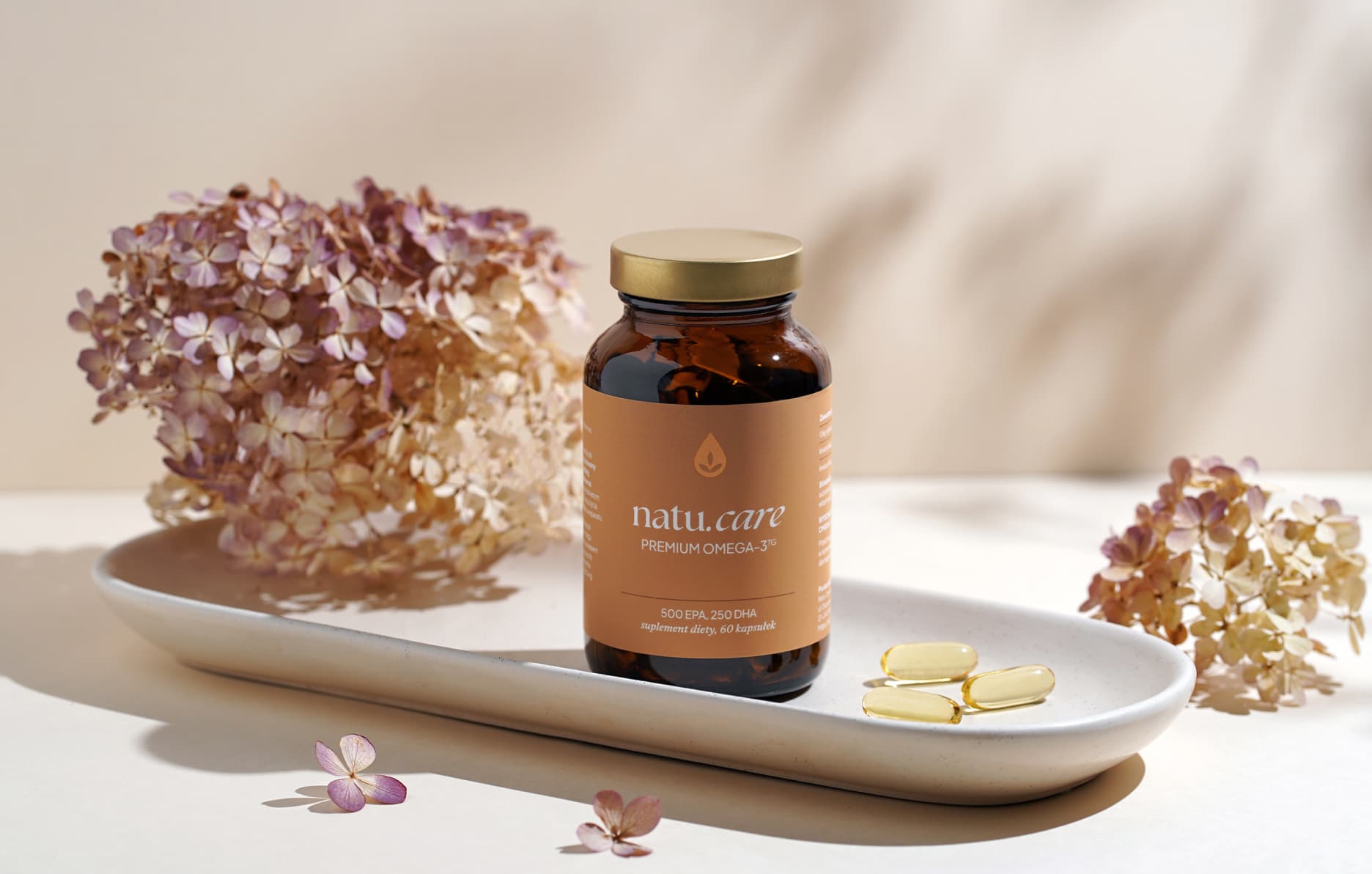
Sprawdź, za co pokochały go tysiące klientek Natu.Care Premium Omega-3ᵀᴳ -15% z kodem BLOG15
Natu.Care Omega-3ᵀᴳ Premium
Natu.Care Omega-3ᵀᴳ Premium dla zdrowia serca, mózgu i odporności. Najlepsza przyswajalność. Optymalna dawka 750 mg. Przebadana przez niezależne laboratorium.
Zobacz więcej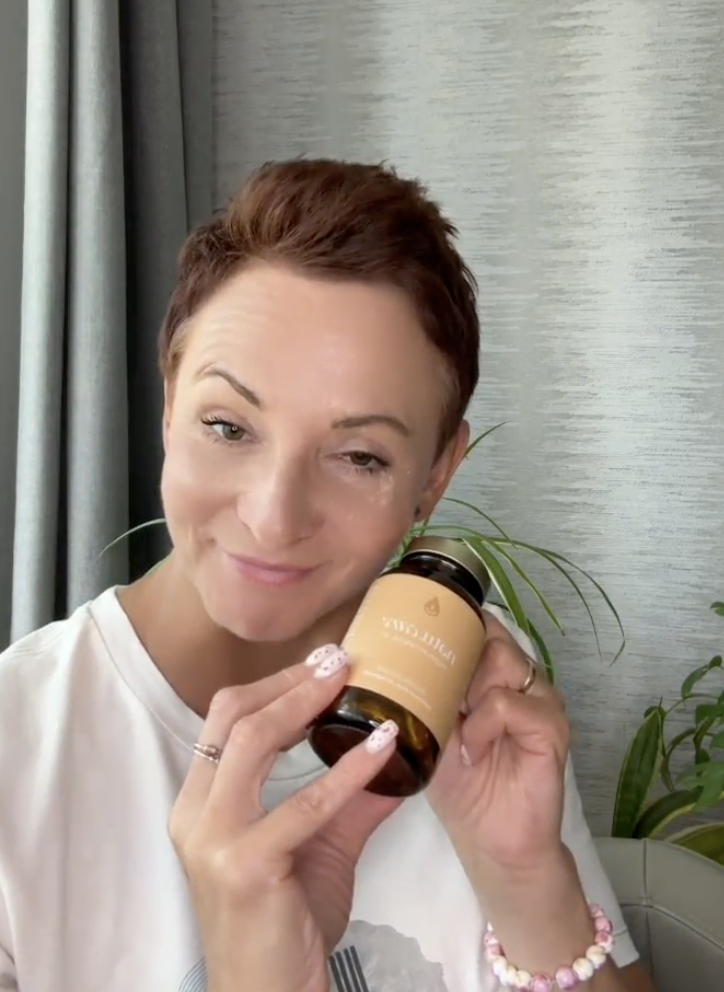
Produkt ma super skład, transparentną etykietę i co dla mnie jest ważne – małe kapsułki do połknięcia. Nie ma też nieprzyjemnego efektu odbijania rybą, który miałam spożywając inne produkty. Widzę znaczną poprawę odporności. Polecam!@Kasia P.
Summary
.
- Gynecological microbiotics contain specific bacterial strains that can help to balance the bacterial flora of the vagina and urinary tract.
- The use of these formulations can help treat intimate infections of both bacterial and fungal origin.
- Gynecological microbiotics have been shown to help maintain the balance of bacterial flora in the vagina and urinary tract.
- The best-studied probiotic bacterial strains with the broadest spectrum of action are Lactobacillus rhamnosus GR-1 and Lactobacillus reuteri RC-14.
- Probiotics should be avoided by people with severe immune disorders and allergies to the ingredients in these preparations. .
FAQ
.How long to take gynaecological probiotics?
.The length of treatment depends on your particular case. For example, if you are taking antibiotics, probiotics are recommended for the entire treatment period and at least one week after. The most common duration of probiotic therapy is 1 to 4 weeks.
.For chronic problems, such as recurrent yeast infections, probiotics can be used long-term, but a doctor should be consulted.
Is it worth using a gynaecological probiotic while on antibiotics?
.Use a gynaecological probiotic during antibiotic therapy. Antibiotics, while eliminating pathogenic bacteria, simultaneously destroy the friendly bacterial flora, which can lead to an imbalance of the vaginal microflora. Gynaecological probiotics provide strains of bacteria that are beneficial to a woman's health, such as Lactobacillus, which help to maintain the normal environment of the reproductive tract.
Using probiotics can reduce the risk of secondary intimate infections, such as thrush or bacterial vaginitis. This is particularly important as antibiotics can increase susceptibility to such infections. Therefore, during antibiotic therapy, it is recommended to take a gynaecological probiotic in parallel.
Do probiotics help with intimate infections?
.Yes, probiotics can help prevent and treat intimate infections. They are particularly effective against vaginal infections caused by anaerobic bacteria. Gynaecological probiotics that contain specific strains of bacteria, such as Lactobacillus rhamnosus GR-1 and Lactobacillus reuteri RC-14 help to balance the bacterial flora, which is crucial for intimate health. Choose probiotic supplements that are designed for oral or vaginal use.
Will a regular probiotic work for the vagina?
.Yes, 'ordinary' probiotics can help maintain vaginal health, but it all depends on their composition. Formulations containing species of lactic acid bacteria, such as Lactobacillus rhamnosus and Lactobacillus reuteri, which are naturally present in a healthy vaginal microflora, can influence vaginal health.
They work by populating the vagina with beneficial microorganisms, which counteracts the proliferation of harmful organisms. In addition, it is a good idea to ensure a diet rich in prebiotics, which support the growth of 'good' bacteria. For example, eat more garlic, onions, asparagus. This is important because a healthy vaginal microflora helps to prevent yeast infections or bacterial vaginitis.
Can you have intercourse if you take a vaginal probiotic?
.Yes, it is possible to have intercourse while taking vaginal probiotics, but there are some guidelines to follow. First of all, use vaginal probiotics as directed. It is best to use them before bedtime, which will allow longer contact with the mucosa.
When having intercourse, wait a few hours after using the probiotic so that the microorganisms have time to colonise. In addition, always pay attention to your body. If you notice any worrying symptoms, consult your doctor. Following these rules will help to optimise the effectiveness of probiotics, while allowing you to have safe intercourse.
Do oral gynaecological probiotics work?
.Yes, oral gynaecological probiotics do work. Studies show that certain probiotic strains are able to pass from the end sections of the digestive tract into the vagina, eliminating pathogens that try to travel there via the same route. This can help prevent and treat intimate infections such as bacterial vaginitis and thrush.
What to improve vaginal pH?
.To naturally affect vaginal pH, eat more probiotic pickles and yoghurts, which are natural sources of probiotics. Vegetables and fruit will instead provide you with fibre, which is a food for the probiotic bacteria that populate the urogenital tract.
Take care of your hygiene. Use gentle, unscented intimate hygiene soaps. Avoid perfumed hygiene products, which can disrupt the natural pH balance. Consider taking gynaecological probiotics, which contain bacteria that help to maintain the acidity of the intimate area.
It is also important to visit your gynaecologist regularly. Disturbances in pH can be a symptom of more serious health problems. All of these measures contribute to maintaining a healthy vaginal pH, which is key to overall intimate health and preventing infections.
The following are some of the most important steps.
.
Sources
.See all
.Buggio, L., Somigliana, E., Borghi, A., & Vercellini, P. (2019). Probiotics and vaginal microecology: Fact or fancy? BMC Women's Health, 19(1), 25. https://doi.org/10.1186/s12905-019-0723-4
Cribby, S., Taylor, M., & Reid, G. (2009). Vaginal Microbiota and the Use of Probiotics. Interdisciplinary Perspectives on Infectious Diseases, 2008, e256490. https://doi.org/10.1155/2008/256490
Jeng, H.-S., Yan, T.-R., & Chen, J.-Y. (2020). Treating vaginitis with probiotics in non-pregnant females: A systematic review and meta-analysis. Experimental and Therapeutic Medicine, 20(4), 3749-3765. https://doi.org/10.3892/etm.2020.9090
Lehtoranta, L., Ala-Jaakkola, R., Laitila, A., & Maukonen, J. (2022). Healthy Vaginal Microbiota and Influence of Probiotics Across the Female Life Span. Frontiers in Microbiology, 13. https://www.frontiersin.org/articles/10.3389/fmicb.2022.819958
Mei, Z., & Li, D. (2022). The role of probiotics in vaginal health. Frontiers in Cellular and Infection Microbiology, 12. https://www.frontiersin.org/articles/10.3389/fcimb.2022.963868
Norfuad, F. A., Mokhtar, M. H., & Nur Azurah, A. G. (2023). Beneficial Effects of Probiotics on Benign Gynaecological Disorders: A Review. Nutrients, 15(12), Article 12. https://doi.org/10.3390/nu15122733
Pino, A., Rapisarda, A. M. C., Vitale, S. G., Cianci, S., Caggia, C., Randazzo, C. L., & Cianci, A. (2021). A clinical pilot study on the effect of the probiotic Lacticaseibacillus rhamnosus TOM 22.8 strain in women with vaginal dysbiosis. Scientific Reports, 11(1), Article 1. https://doi.org/10.1038/s41598-021-81931-z
Reid, G. (2017). The development of probiotics for women's health. Canadian Journal of Microbiology, 63(4), 269-277. https://doi.org/10.1139/cjm-2016-0733
Superti, F., & De Seta, F. (2020). Warding Off Recurrent Yeast and Bacterial Vaginal Infections: Lactoferrin and Lactobacilli. Microorganisms, 8(1), Article 1. https://doi.org/10.3390/microorganisms8010130
van de Wijgert, J., & Verwijs, M. (2020). Lactobacilli-containing vaginal probiotics to cure or prevent bacterial or fungal vaginal dysbiosis: A systematic review and recommendations for future trial designs. BJOG: An International Journal of Obstetrics & Gynaecology, 127(2), 287-299. https://doi.org/10.1111/1471-0528.15870
De Seta, F., Parazzini, F., De Leo, R., Banco, R., Maso, G. P., De Santo, D., Sartore, A., Stabile, G., Inglese, S., Tonon, M., & Restaino, S. (2014). Lactobacillus plantarum P17630 for preventing Candida vaginitis recurrence: A retrospective comparative study. European Journal of Obstetrics, Gynecology, and Reproductive Biology, 182, 136-139. https://doi.org/10.1016/j.ejogrb.2014.09.018
.
Editorials
Meet the team

Ilona Krzak obtained her Master of Pharmacy degree from the Medical University of Wrocław. She did her internship in a hospital pharmacy and in the pharmaceutical industry. She is currently working in the profession and also runs an educational profile on Instagram: @pani_z_apteki

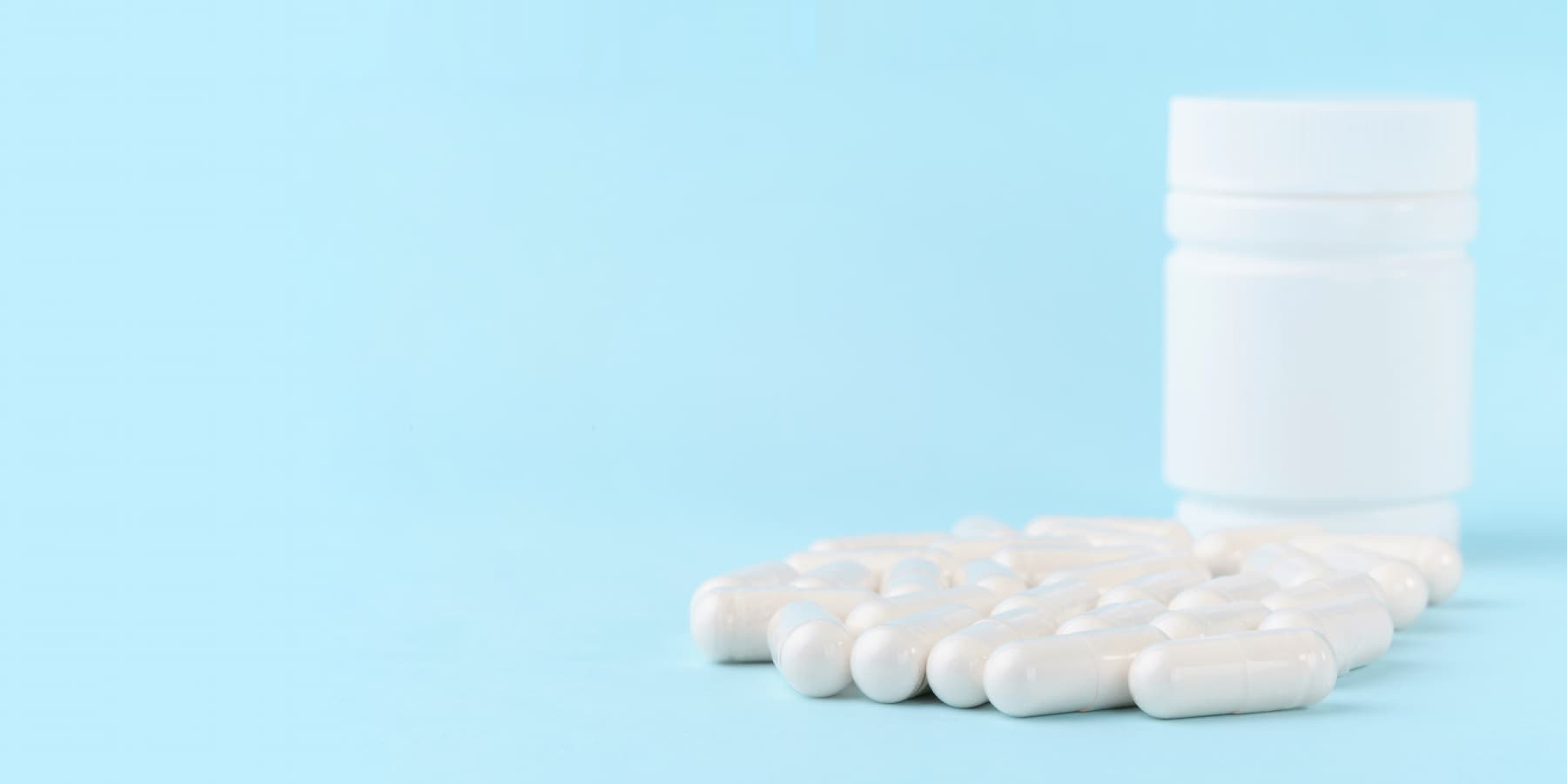
Chondroitin helps the joints and other elements of the body.
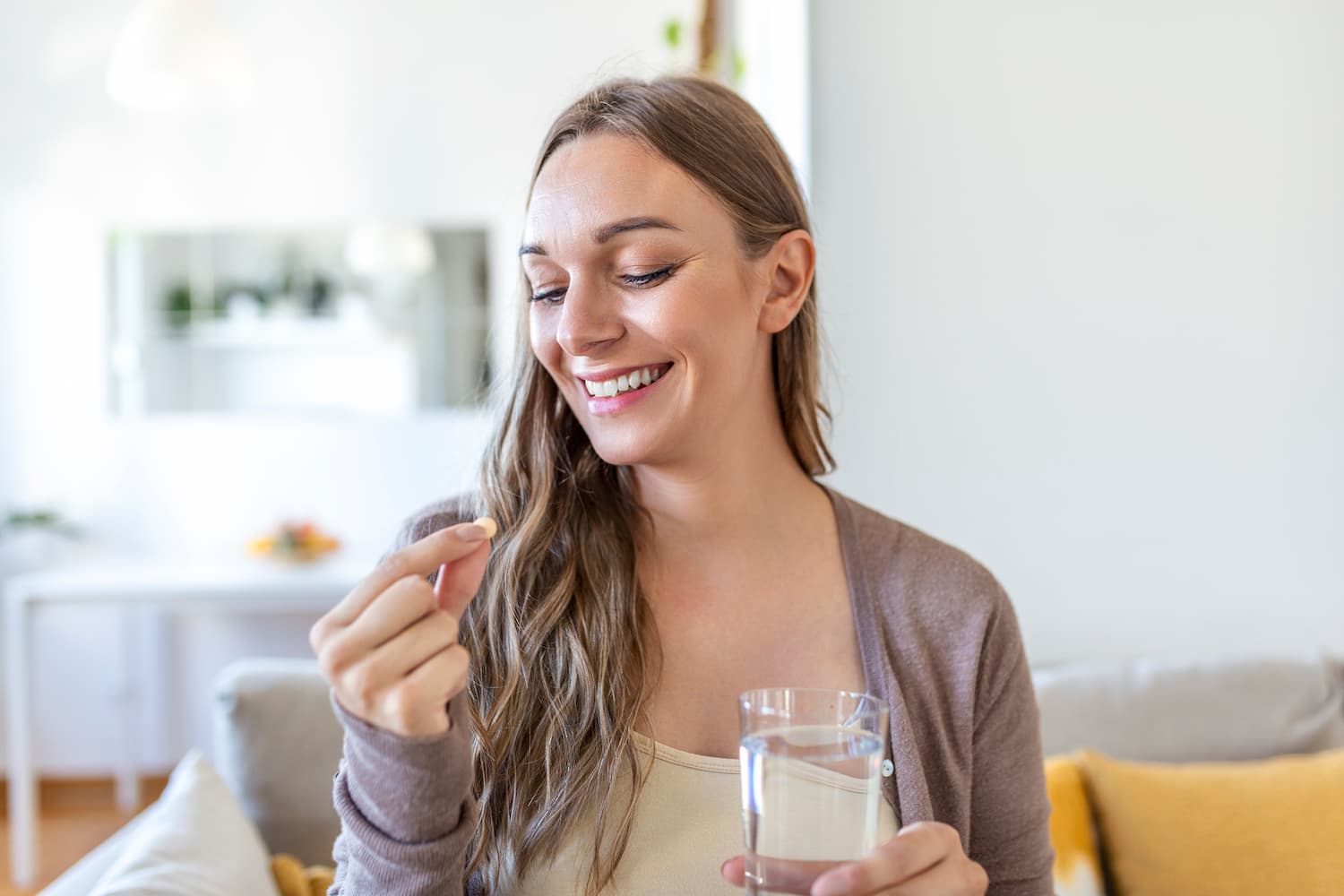
Glutathione is one of the most potent antioxidants for supporting the body's health. Find out how it works and where to get it from.

See why hip joints hurt and how to treat their ailments.
